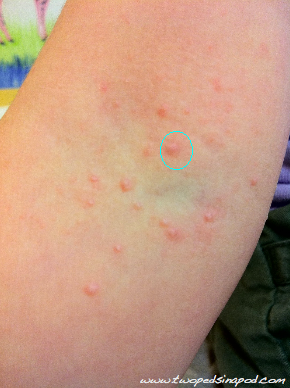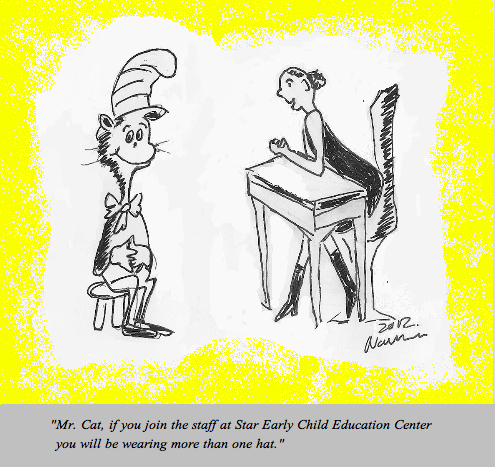
Let’s think about universal parental admonishments:
“Hold on tight.”
“Be careful.”
“Look out!”
“Don’t let go.”
Now let’s think about the universal goal of parenting: to create children who grow up to become independent.
That means that at some point, after your child learns to hold tight, be careful, and look out, your child will need to let go.
This inevitable march toward independence does not begin when your child turns eighteen, but rather years before. Kids learn independence in small steps starting when they are still babies in our eyes.
For instance, take feeding. First you breastfeed or bottle feed. Eventually you encourage your young child to drink out of her own cup as SHE holds it. When she’s able to pick up lint from the floor and stuff it into her mouth, you know she’ll be able to feed herself finger foods from the family dinner table. At 18 months, children are capable of wielding their OWN spoons and fork—so let her do so, no matter the mess. By constantly challenging her with self feeding, your toddler becomes the preschooler who eats lunch with her friends at “lunch bunch” and the college student who chooses to eat salad at the cafeteria.
How does a child learn to maneuver stairs? If you always carry her, she will never learn. Older siblings often teach the younger ones how to crawl backwards to the top of the steps and then go down safely buttocks first. I have fond memories of my son crawling backwards like a dump truck nearly the entire length of the hallway before reaching the steps. I would imagine a high pitched beeping sound as he inched backwards. As walking becomes steadier, your kid will learn to hold onto the banister as she goes up and down. Fast-forward and someday she will be the dexterous mom who carries her coffee in one hand, the laundry basket in the other and her phone between her ear and shoulder as she heads downstairs.
What does “be careful” mean? I find that kids often have no frame of reference for “careful” So be specific with your advice. When my kids were toddlers and carried cups of milk to the table, instead of only saying “be careful” I would remind them to “walk slowly.” If they (gasp) cut paper with scissors, I would say, “watch where your fingers are.”
For kids, personal safety is often not enough of a motivation to listen to advice. When my twins were almost two years old, I realized that I belted them in their double stroller so often in public, they did not have an opportunity to learn how to stay with me. So, one day I had them hold my hands as we crossed the parking lot at their older brother’s school. They immediately tried to escape and run in opposite directions. I instructed them to “hold tight to my hands” or “Mommy will have to carry you like a baby.” The thought of walking into their older brother’s school like “big boys,” kept them holding on.
Sometimes we need to allow children to fall, literally and figuratively. If missing the carpeted step that leads to the living room means your toddler falls, then let her learn from her mistake. An older child who insists on leaving his jacket at home will learn from natural consequences if he is too cold outside (remember you can’t catch a cold from the cold, you just feel cold). Remember all those skinned knees you sustained as a child? Yet now you can ride a two wheeler bike and you run faster because you practiced running, even if you fell a few times. If you make your child too afraid of falling, then he will be unable to take the risks involved in learning new skills.
Let your child complete his own homework from a young age. Offer to proofread but don’t nag. Teachers already have consequences in place for children who do not complete homework, or for those who do a sloppy job. Let your middle schooler choose which foreign language or musical instrument or sport he wants to learn without pointing out the practicalities of what you consider the “better” choice.
Of course we need to protect and guide our children. But we need to learn to relinquish control over our children’s actions at the appropriate ages.
As the viral internet sage Eva Witsel says, “I can spend my energy on limiting my child’s world so that he will be safe and happy or I can spend my energy on helping my child learn the skills to navigate our world himself so that he will be safe and happy. I think the latter has a better chance of success in the long term.”
In grade school I remember holding tight to the chains of the playground swing as I swung higher and higher. But I also remember that glorious feeling as I let go, sailed through the air, and landed on my feet.
Don’t deprive your child of that same glorious feeling of letting go.
Julie Kardos, MD with Naline Lai, MD
©2012 Two Peds in a Pod®









 Yow!
Yow! Guest blogger pediatrician Heidi Román returns to us today to give practical advice on how to decrease potential toxins in your child’s environment.
Guest blogger pediatrician Heidi Román returns to us today to give practical advice on how to decrease potential toxins in your child’s environment.
 My youngest child clambered off the bus Friday afternoon with a fixed grin across his face.
My youngest child clambered off the bus Friday afternoon with a fixed grin across his face.